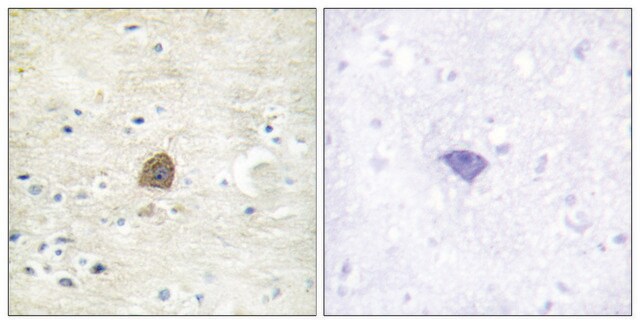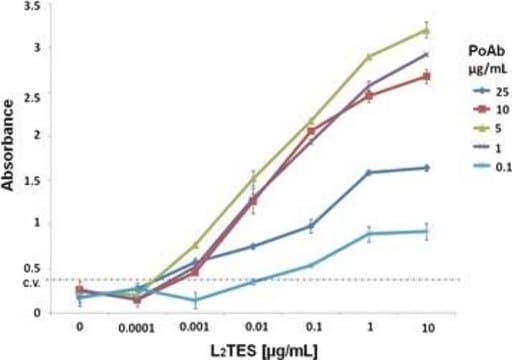SAB4700767
Monoclonal Anti-HBV antigen HBsAg antibody produced in mouse
clone HB5, purified immunoglobulin, buffered aqueous solution
Synonym(s):
Hbsag Antibody, Hbsag Antibody - Monoclonal Anti-HBV antigen HBsAg antibody produced in mouse
About This Item
Recommended Products
biological source
mouse
Quality Level
conjugate
unconjugated
antibody form
purified immunoglobulin
antibody product type
primary antibodies
clone
HB5, monoclonal
form
buffered aqueous solution
species reactivity
hepatitis B virus
concentration
1 mg/mL
technique(s)
ELISA: suitable
immunocytochemistry: suitable
isotype
IgG2a
shipped in
wet ice
storage temp.
2-8°C
General description
Specificity of the antibody HB5 was verified by ELISA on panel of virus subtypes identified on International Workshop on HBsAg Subtypes (Paris, April 1975). The antibody HB5 does not cross-block with the antibody HB3.
Immunogen
Application
Biochem/physiol Actions
Features and Benefits
Physical form
Disclaimer
Not finding the right product?
Try our Product Selector Tool.
Storage Class
10 - Combustible liquids
flash_point_f
Not applicable
flash_point_c
Not applicable
Certificates of Analysis (COA)
Search for Certificates of Analysis (COA) by entering the products Lot/Batch Number. Lot and Batch Numbers can be found on a product’s label following the words ‘Lot’ or ‘Batch’.
Already Own This Product?
Find documentation for the products that you have recently purchased in the Document Library.
Our team of scientists has experience in all areas of research including Life Science, Material Science, Chemical Synthesis, Chromatography, Analytical and many others.
Contact Technical Service








